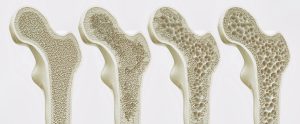To Ice, or Not to Ice?
In this month’s newsletter, we will be talking about the rather cool topic of icing soft tissue injuries. It has been common practice, and such a core part of our initial treatment of soft tissue injuries that we don’t tend to even ask whether ice is required. Interestingly though, it is not as straight forward as we once thought it was. We see athletes on TV barely making it off the field before a bag of ice is strapped to the injured body part. But is it doing as much benefit as we think it is and what does the latest research say about the use of ice?
Over the years we have had acronyms such as ICE, RICE, PRICE and then POLICE (Protect, Optimal Loading, Ice, Compression and Elevation). One of the main common denominators in each of these acronyms is I, for ice.
I will state the obvious in saying that ice acts as a great numbing agent for superficial tissues. This is often the reason why those applying ice to injured tissues report that it feels better for a short period afterwards. Beyond this, studies have shown that the effects of ice have practically no impact on cooling deeper tissues. The body is simply too efficient in maintaining adequate blood flow and body warmth in deeper tissues, and this is something we would naturally expect of the body.
We now know that the inflammation process is essential for healing. Research has found that ice may actually inhibit the beneficial release of certain products associated with inflammation (eg. Insulin like Growth Factor (IGF-1)). Due to findings of this nature, the blanket use of ice for all soft tissue injuries has recently been questioned. In fact, a more comprehensive acronym has been developed. This one sounds rather comforting and includes the words PEACE & LOVE. This refers to Protection, Elevation, Avoid anti-inflammatory drugs, Compression, Education & Load, Optimism, Vascularisation and Exercise.
So, what does all this mean for me next time I experience a soft tissue injury? And do I necessarily need to apply ice if I “pull” my hamstring this afternoon, running after my dog. In general no, it really is not that integral for your recovery to ice minor soft tissue injuries. In general, your body will recover well from minor sprains and strains without ice.
Remember though, as is common with the human body, there are exceptions. Too much swelling and inflammation is not optimal for tissue recovery and can cause joint stiffness, muscle inhibition, excessive scar tissue and additional pain, all of which will delay your recovery and delay your return to normal activity. For moderate to severe injuries, where there is excessive swelling (i.e. after a moderate ankle or knee ligament sprain) and excessive bleeding / bruising within the tissues (i.e. from a corked thigh muscle), ice is still a beneficial component of early injury management in improving outcomes.
So, in conclusion, it is not a case of never using ice again for soft tissue injuries, just be wiser in how you use it so as not to compromise optimal recovery. In many circumstances (providing the injury is not too severe, it is best to prioritise moving the injured area gently, as soon as you are able, within pain tolerated limits. Remember though, each injury is unique, and it would be best to visit your physiotherapist at 4 Life Physiotherapy to help guide your through your particular situation.
By Leroy Dekker – Physiotherapist






